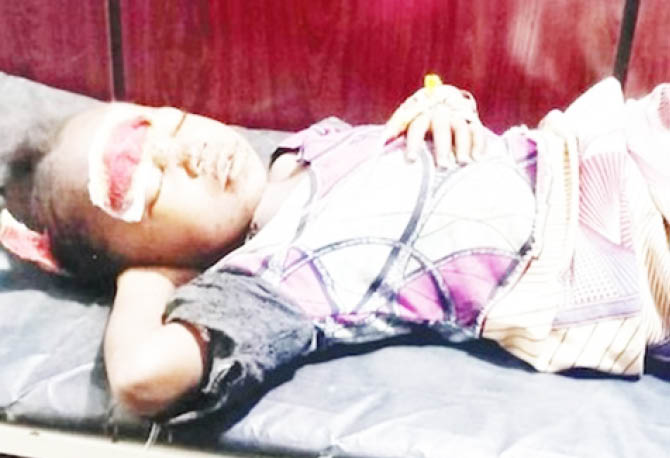Why the massacre at Tudun Biri
The massacre that occurred in Tudun Biri, a village located in Igabi Local Government of Kaduna State, has attracted both national and international attention. Though the heinous event took place under the cover of the night on the penultimate Sunday, by daylight the following day the story was swirling in all the media around the […]

Victims of the recent airstrike in Kaduna2
The massacre that occurred in Tudun Biri, a village located in Igabi Local Government of Kaduna State, has attracted both national and international attention. Though the heinous event took place under the cover of the night on the penultimate Sunday, by daylight the following day the story was swirling in all the media around the world.
What shocked the world was that the massacre was not carried out by the usual villains, the insurgents or bandits, but by a drone operated by Nigerian soldiers, raining deaths on hapless villagers celebrating a religious occasion. It is what is euphemistically referred to as friendly fire in military parlance; that is, a situation whence attack is perpetuated on the same side or on those meant to be protected.
The outcry was spontaneous and widespread, understandably because it was becoming a mishap too many. A few months ago, the Nigerian Air Force had wrought similar misfortune on hapless herders in Kwatiri, a border town between Nasarawa State and Benue State, killing over 30 of them. A group of herders led by their Ardo had gone to pay a hefty fine to the Benue State Government to collect their cattle that were said to have violated the government’s anti-grazing law.
After paying the fine, the herders were loading the cattle on a truck when the Nigerian Air Force struck viciously, allegedly mistaking them for bandits. More than 30 herders were said to have perished in the attack. Many opined that it was a classic case of ethnic profiling as herders, in these times, are identified with banditry and kidnapping.
- After Daily Trust’s report, FG goes after kidney traders
- TCN raises alarm over vandalism of transmission lines in Port Harcourt
However, the worst case of the massacre of defenceless citizens was perpetuated in a camp of Internally Displaced Persons, (IDPs), in Rann, a village in Kala-Balge Local Government of Borno State in 2017. The IDP camp was host to thousands of citizens who had escaped the onslaught of Boko Haram insurgents.
Due to some intelligence mishap, the Nigerian Air Force mistook the camp as a mass gathering by Boko Haram insurgents getting ready for an attack. The bombardment left over 100 dead and many injured including Red Cross aid workers. Probably due to the number of foreign national casualties, the massacre ignited the world press and remained on the front burner for months.
There have been many more cases of these killings of defenceless citizens from the air ever since the armed forces were brought into the fray to augment the police effort to douse the Boko Haram inferno that had threatened to consume the country.
Daily Trust on Saturday last week uncovered the sordid statistics of 16 instances of such killings from 2014 in at least seven states across the North. Borno State bore the worst brunt in five villages, Kayamla 2014, Rann 2017, Daglun 2018, Gaji-Ganna 2019, Mainok 2019, and Kwatar Daban 2021. Hundreds have perished in Borno State from such wanton display of firepower from our armed forces. The killings have now spread to all areas of conflict in the North needing all citizens of goodwill to help stop it.
It is not enough for the armed forces generals to continue to parrot the same predictable and jejune messages. “Oh! It was an accidental air strike, it is not intended, it was a mistake, we were pursuing bandits who embedded into the villagers”. The excuses sound hollower and hollower with every additional atrocious event occurring. Even the promise to make corrections is now hardly believed.
Since the 2014 Kayamla event, the armed forces have been promising to make amends to guide against a repeat but to no avail. Things have even worsened in the last few years. In the last two years, there have been at least eight instances of such wanton killings across the North.
The armed forces are clearly at the end of their tether. Ever since the first accidental air strike against the Kayamla villagers in 2014 to date, the internal reports that investigated these calamities, by the armed forces, have never been made public. None of the personnel directly responsible has been heard to have faced disciplinary action.
The armed forces need help to get around these senseless murders of the innocent, even though they always kick against prying eyes into their affairs claiming that security matters are better left in their hands to deal with. The high body count and the regularity of the occurrences are now an indication that the country can’t continue to leave these matters in the hands of the armed forces.
From my perspective, what is needed urgently is an independent enquiry to be headed by a reputable retired Justice of the Supreme Court with a good number of retired armed forces chiefs and notable other public officers to investigate these occurrences including past reports, if any, and come up with recommendations on a way forward. All these rounds of visits, by the generals and other public officers, shedding crocodile tears, here and there, will not serve the purpose. It will only further infuriate.
